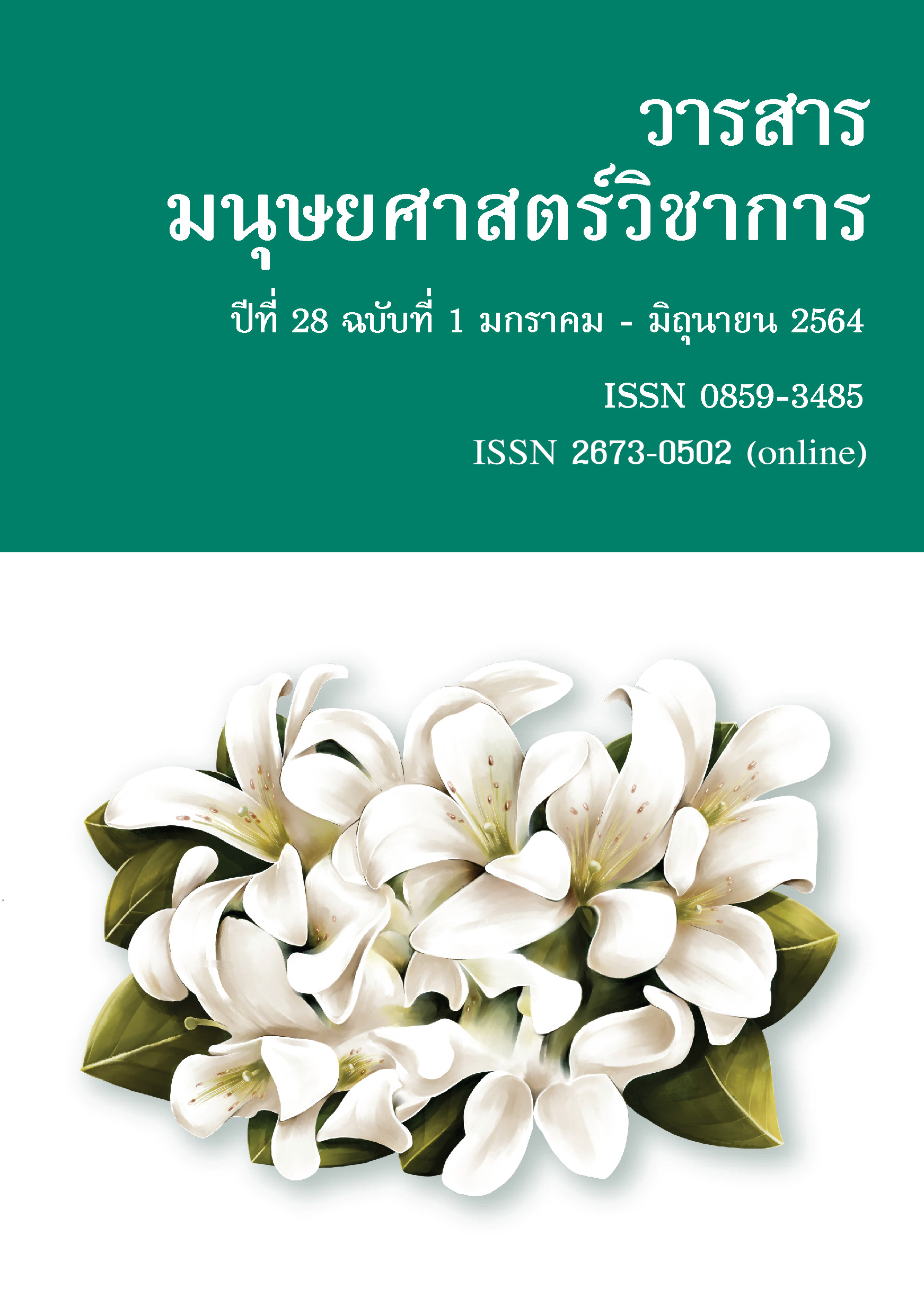The Doubts Concerning the Inequality in Permitting the Ordination of Bhikkhuni: An Analytical Study of the Buddha’s Decree on the 8 Garudhammas and the First Buddhist Council
Main Article Content
Abstract
This research was a qualitative investigation using documentary analysis method. This paper anylyzed the doubts that led to the inequality in permitting the ordination of Bhikkhuni. However, the objective of this analysis did not focus on the discussion on each individual of the 8 Garudhammas, but concentrated on the decreeing of the 8 Garudhammas, the establishing of Bhikkhuni communities and the doubts concerning events that occurred during the the first Buddhist council. The issues also discussed whether it was true
that the Buddha did not want to have a Bhikkhuni community, or whether the existence of bhikkunis would cause a decline of Buddhism. Could the Buddha be a woman? Why was there no Bhikkhuni taking part in the first Buddhist council? Was the Mahākassapa the real author of the Garudhamma? Why was Ananda castigated for requesting permission from the Buddha to allow women to be ordained as a Bhikkhunis? These were carried out by a thorough review of documents mostly written by foreign scholars, especially their skepticisms in this issue. It was noted, however, that this issue might not be of major sigificance from the perspective of Thai Buddhism but it was worth to analyze and clarify the issue by basing the analysis on the Pali Buddhist Canon.
This research found that there were diverse and different interpretations of the Buddhist scriptures by scholars, and oftentimes came from the feminism perspective or that of lay people. It was essential to have a profound understanding of The Pali Buddhist Canon and its interpretation, together with the understanding the context of traditional Buddhism culture that still practised in Thailand to better understand the issue from the perspective of the Sangha. This could help elucidate the issues and tended to clarify that the 8
Garudhammas were evidently decreeed during the Buddha’s era and it was not Mahākassapa’s scheme in the first Buddhist council to exclude Bhikkhunis. It was not the Lord Buddha’s intention to oppress Bhikkhuni, but the Garudhammas were the basic principles for the Bhikku and Bhikkuni to peacefully cohabit and cultivate dhamma together in Sangha communities.
Article Details
References
ทองย้อย แสงสินชัย. (2546). เหตุเกิดเมื่อ พ.ศ. 2545 (2). กรุงเทพฯ: มูลนิธิพุทธธรรม.
ธัมมนันทา ภิกษุณี (ฉัตรสุมาลย์ กบิลสิงห์) . (2544). สตรีในพระพุทธศาสนา. กรุงเทพฯ: ส่องสยาม.
ธัมมนันทา ภิกษุณี (ฉัตรสุมาลย์ กบิลสิงห์) . (2547). เรื่องของภิกษุณีสงฆ์. กรุงเทพฯ: บริษัท ส่องสยาม จำกัด.
พระธรรมปิฎก (ป.อ. ปยุตฺโต). (2547). ตื่นกันเสียทีจากความเท็จของหนังสือ “เหตุเกิด พ.ศ.๑”. กรุงเทพฯ: สหธรรมิก.
มหาจุฬาลงกรณราชวิทยาลัย. (2539). พระไตรปิฎกฉบับภาษาไทย ฉบับมหาจุฬาลงกรณ ราชวิทยาลัย เล่มที่ 11. กรุงเทพฯ : โรงพิมพ์
มหาจุฬาลงกรณราชวิทยาลัย.
มหามกุฏราชวิทยาลัย. (2537). พระไตรปิฎกฉบับภาษาไทย ฉบับมหามกุฏราชวิทยาลัย เล่มที่ 1, 7, 9, 11, 15, 22, 48, 24, 21, 36, 37. กรุงเทพฯ : โรงพิมพ์มหามกุฏราชวิทยาลัย.
มหามกุฏราชวิทยาลัย. (2538). พระไตรปิฎกฉบับบาลี ฉบับสยามรัฐ เล่มที่ 11, 15. กรุงเทพฯ : โรงพิมพ์มหามกุฏราชวิทยาลัย.
เมตตานันโท ภิกขุ. (2545). เหตุเกิด พ.ศ. 1 (2), กรุงเทพฯ: S.P.K Paper and Form.
รังษี สุทนต์. (2548). การวิเคราะห์คัมภีร์พระพุทธศาสนา : กรณีภิกษุณีสงฆ์. กรุงเทพฯ: สถาบันวิจัยมหาจุฬาลงกรณ์ราชวิทยาลัย.
วิไลพร สุจริตธรรมกุล. (2558). ครุธรรม 8 เป็นสิ่งที่พระพุทธเจ้าทรงบัญญัติหรือไม่ 1. ธรรมธารา วารสารวิชาการทางพระพุทธศาสนา (2), 117-156.
วิไลพร สุจริตธรรมกุล. (2559). ครุธรรม 8 เป็นสิ่งที่พระพุทธเจ้าทรงบัญญัติหรือไม่ 2. ธรรมธารา วารสารวิชาการทางพระพุทธศาสนา (2), 106-187.
Bancroft, Anne. (1987). Women in Buddhism. Women in the World’s Religions, Ursula King ed. New York: Paragon House Publishers.
Cai, Wen Ting (蔡文婷). (1998). Puti daoshang Nverduo [Many daughters on Bodhi road]. Guanghua, 22(12), 82-95.
Chen, Mei Hua (陳美華). (1998). Jiedu biqiuni zai xifangren yanzhong de yinhan [Interpretation of the Implied Meaning of “Bhikuni” in the view of Westerners]. Zhonghua foxue xuebao, 11(7), 311-317.
Gu, Zhengmei (古正美). (1987). Cong fojiao sixiang shi shang zhuanshenlun de fazhan kan Guanyin pusa zai zhongguo zhaoxiang shisang zhuan nan cheng nvxiang de youlai [From the development of the theory of turn-around in the history of Buddhist thought explain the origin of Guanyin Bodhisattva statues in the history of Chinese].
Dongwu daxue zhongguo yishu shijikan, 15(02), 157-225.
Li, Yuzhen (李玉珍). (2002). Biqiuniyanjiu--fojiao yu xingbie yanjiu de jiaobu. [Bhikuni Study--The Negotiation between Buddhism and Gender Studies], Funu yu xingbie yanjiu tongxun, 62(03), 11-16.
Li, Yuzhen and Lin, Meimei (李玉珍、林美玫合編). (2003). Funv yu zongjiao [Women and religion]. Taipei: Lirenshuju.
Li, Zhende (李貞德). (1993). Zuijin zhongguo zongjiao shi yanjiu zhong de nvxing wenti [Female Issues in the Study of Chinese Religious History]. Jindai zhongguo fu nv shi yanjiu, 2, 251-270.
Lu, Huixiang (盧蕙馨). (2000). Xiandai fojiao nvzi de shenti yuyan yu xingbie congjian: yi ciji gongdehui wei li [Body Language of Modern Buddhist Women and Gender Reconstruction: case study of Tzu Chi Merit foundation]. Zhongyang yanjiu yuanmin zuxue yanjiusuo jikan, 88(06), 275-311.
Paul, Diana Y. (1985). Women in Buddhism: Images of the Feminine in the Mahāyāna Tradition. 2d ed. Berkeley and Los Angeles: University of California Press.
Peach, Lucinda Joy. (2002). Social Responsibility Sex Change and Salvation Gender Justice in the Lotus Sutra. Philosophy East & West, 52(1), 50-74.
Piven, Jerry S. (2003). Phychoanalytic Review. ProQuest Medical Library, 90(4), 498-536.
Rilian (日莲). (2017). Nuxing cheng fo [Wom en become Buddha]. SOGA GAKKAI MALAYSIA Webpage. Retrieved April 25,2017, http://www.sgm.org.my/cn/?cur=page/page&id=91&title=%E5%A5%B3%E6%80%A7%E6%88%90%E4%BD%9B
Ryokan Nagasaki. (1978). A Study on the Ordination of Mahāpajāpatī Gotamī Bhiksunī.” Journal of Indian and Buddhist Studies Vol 26: 655-656 Tokyo: University of Tokyo.
Shaw, Miranda. (1994). A Review of Passionate Enlightenment: Women in Tantric Buddhism. New Jersey: Princeton University Press.
Shi, Yinshun (釋印順). (1997). Chuqi dachen fojiao zhi qiyuan yu kaizhan [The Origin and Development of the Early Mahayana Buddhism]. Taipei: zhengwen.
Shi, Zhaohui (釋昭慧). (2001). Qianzaichenyin——xinshijidefojiaonuxingsiwei [Thousand year of faltering memory——Buddhist Female Thinking in the New Century]. Taiwan: Fajie.
Taisho. (1924). 《大正新修大藏》第1,14册。
Wu, Yihui (吳怡慧). (2004) Cong fodian kan fomen zhong de nvzi qishi [Viewing Women’s Discrimination in Buddhism from Buddhist Scriptures]. Zhongzhonglunji, 4(06), 113-126.
Yu, Junfang (于君方). (1990). Images of Kuan-yin in Chinese Folk Literature. Hanxueyanjiu, 8(01), 221-227.


